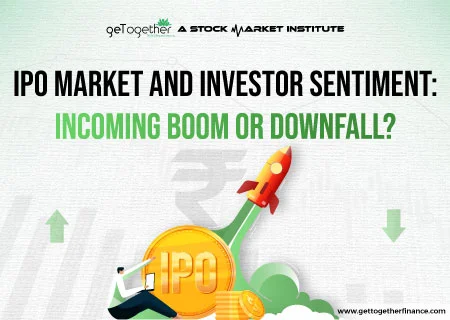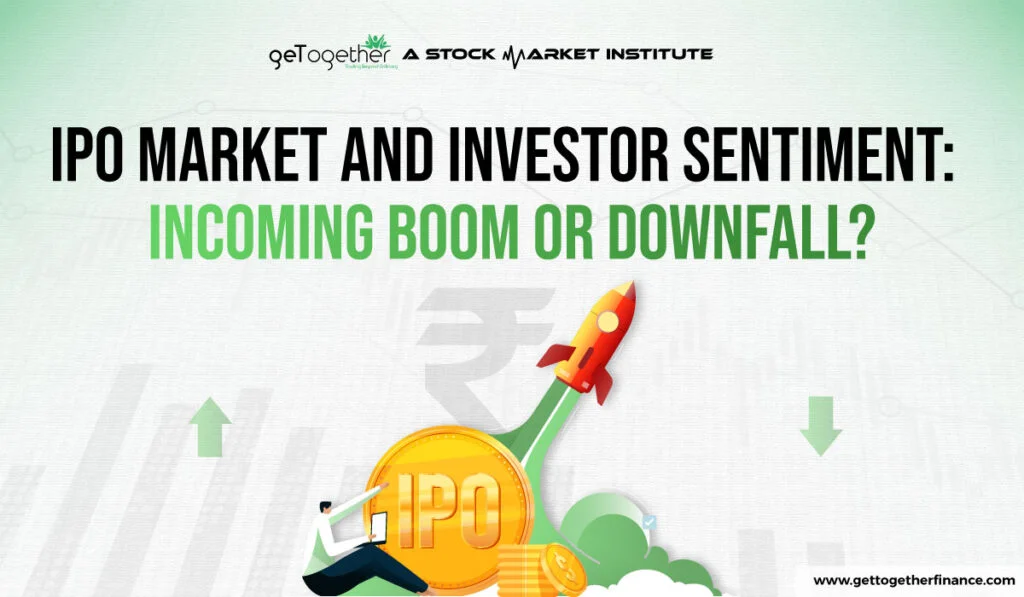IPO Market and Investor Sentiment: Incoming Boom or Downfall?


India is currently one of the fastest-growing economies. The current economic landscape of India is providing opportunities to each and every redeemable idea. From youngsters to senior citizens, the doors of opportunity in private and public sectors are increasing aggressively. One of the greatest contributors to this increasing opportunity is the IPO market and investor sentiments.
As the young lads in India are getting a platform to present their ideas and take funding for businesses or startups, the number of successful companies is increasing. This in turn is profoundly promoting the IPO issues. The government is making it easy for deserving companies to go public either in SME or Mainboard IPO and raise funding from all the investors around the nation.
Let’s understand how the Indian IPO market is thriving tremendously with increased investor interest and favorable policies.
Table of Contents
ToggleIPO Market of India

After the sudden hit of the pandemic, the Indian stock market has seen a memorable boom. People have started educating themselves about the science of savings. They are willing to take risks with the economy of the country and rigorously invest in the stock market.
Many new companies are getting opportunities to raise funding from the public with the help of seamless IPO offers. The RBI and SEBI have collectively made company-friendly policies to make it easy for new companies to go public by fulfilling adequate criteria.
Analysts around the world are praising India for giving an easy environment to the companies for going public.
Seeing the stats of FY 2023-2024, a total of 220 IPOs were listed which was almost 48% more than the previous financial year. This significant increase in number was the result of the stabilized government and interest in investor sentiments.
Also Read: Biggest IPOs
Diversion of Global Markets
Earlier people of India especially investors and retailers were scared of investing in the Indian market due to unstable government and monetary policies. This made the Indian market susceptible to volatility caused by the global market, especially the US market. Now if we see and ask people about their investment sentiments Indians claim that they have faith in their economy and are willing to invest in it via the share market.
This has made many startups and business owners realize that going with IPO market issues on a domestic level is more than enough. The Indian market has investors, a reliable market, and seamless and integrated public issue policies. This impacts the liquidity of the market, making it easy for buyers and sellers to make transactions as per their will, making investing more participative.
SEBI’s Role in IPO Wave

SEBI played a huge role in making people go crazy over the listing of IPOs. This eventually helped companies in raising capital and investors in finding safe yet growing investment options.
SEBI strategically reduced the IPO listing timeline from T+6 to T+3 days, making it streamlined for the issuing company investors.
By reducing the time involved in listing prices, investors can access their blocked capital in less time, mitigate pricing risks, and streamline administrative operations.
Furthermore, SEBI has introduced several measures to improve the primary market landscape in the last couple of years. Such as increasing the time for lock-in periods for anchor investors. Additionally, it has also segmented the NII tranche for big and relatively smaller ticket sixes based on their capital preferences. These measures are taken to enhance transparency, avoid sharp swings in the market, and save investors from any adverse effects.
Analysts Projection for the Indian Market
If we see the stats, analysts are predicting that India is projected to surpass $4,000* per capita income by 2030*, the growth potential for listed companies, both large and small, is immense. This growth will be the result of consumer spending, fueled by rising spending power and the digitization of the economy.
Optimistic Future of the Indian Capital Market

If we follow the market trajectory right now, it is going in a positive direction for both secondary and primary markets. The significant interest of investors and issuers is the reason behind it. However, there are a lot of other factors promoting the IPO market boom era in India.
First and foremost is economic growth. As the economy grows, it makes room for ample opportunities for the expansion of the public market. Also, increased FDI in India with a powerful government has made the capital market stand individually, reducing its dependence on foreign markets.
Secondly, there has been substantial space or anticipation for more than 100 profitable or soon-to-be profitable new-age companies, with around more than 60% of them turning unicorns and others on the path to becoming one. These are expected to go public soon, gaining the attention of retailers in the next 5-8 years.
Analyzing the trend of the digital revolution in India, it is the world’s second-largest internet user base globally with the majority of tech companies. Also, the number is expected to rise in the coming years in terms of users, propelling a new age of Indian companies to grow their valuation to more than $6 trillion.
As a result, these organizations will face interesting times ahead. With the help of economic growth and increased internet penetration, these new-age Indian enterprises have the potential to become major players in the public equities markets.
Conclusion
The Indian IPO market is enjoying unprecedented development, owing to favorable government regulations, investor interest, and a stable economic climate. As more companies go public, the capital market thrives, attracting both domestic and international investors. SEBI’s proactive initiatives, such as shortening the IPO listing period and increasing market transparency, have only fueled this growth. As India’s economy grows, the IPO market appears attractive, with an increasing number of startups and established enterprises looking to raise capital through public offerings. The ongoing digital revolution and expanding consumer buying power would enhance the expansion of Indian businesses, establishing them as major players in the global market. This dynamic landscape predicts a promising future for India’s capital market.
Frequently Asked Questions
What has contributed to the recent boom in the Indian IPO market?
The current surge in the Indian IPO market can be ascribed to favorable government policies, a stable economic climate, greater investor education and interest, and SEBI’s proactive attempts to expedite the IPO process.
How has SEBI impacted the IPO market in India?
SEBI has had a substantial impact on the IPO market by shortening the IPO listing schedule from T+6 to T+3 days, boosting transparency, and introducing steps to improve market stability and investor protection, such as changing lock-in periods and segmenting the NII tranche.
Why are investors now more confident in the Indian market?
Investors are more optimistic about the Indian market due to a stable administration, stronger economic policies, reduced reliance on foreign markets, and a positive prognosis for economic growth and digitization.
What role does the digital revolution play in the growth of the Indian IPO market?
The digital revolution is important since it increases the number of internet users and technology enterprises in India. This increase in digital infrastructure promotes the establishment of new-age enterprises, many of which are becoming or on their way to being unicorns, drawing major investment.
How has the number of IPOs changed in recent years?
In the fiscal year 2023-2024, the number of IPOs launched in India increased by 48% over the previous year, totaling 220 IPOs, suggesting rising investor interest and favorable market conditions.
What is the projected per capita income for India by 2030, according to analysts?
Analysts predict that India will have a per capita income of more than $4,000 by 2030, owing to growing consumer spending power and continued economic digitization.
How does increased FDI influence the Indian IPO market?
Increased Foreign Direct Investment (FDI) benefits the Indian IPO market by giving more cash for growth, creating a more solid economic climate, and lowering the market’s reliance on foreign economies, all of which help to stabilize and build investor confidence.
What is the future outlook for the Indian capital market?
The future picture for the Indian capital market is positive, with ongoing economic development, a rise in profitable new-age companies coming public, and an increasing digital economy driving market expansion and investor involvement.



 Instagram
Instagram
